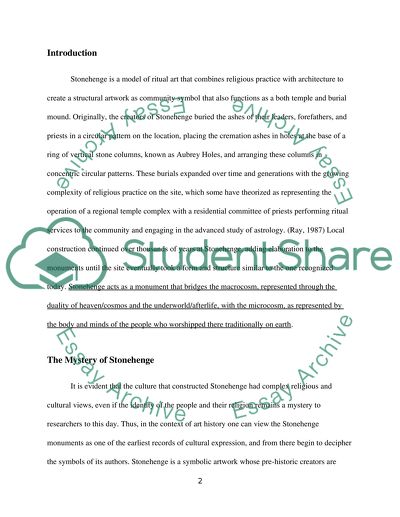Cite this document
(“Stonehenge: Neolithic Ritual Art in Astrological Alignment Time, Research Paper”, n.d.)
Retrieved from https://studentshare.org/architecture/1429662-your-choice-prehistory-yt
Retrieved from https://studentshare.org/architecture/1429662-your-choice-prehistory-yt
(Stonehenge: Neolithic Ritual Art in Astrological Alignment Time, Research Paper)
https://studentshare.org/architecture/1429662-your-choice-prehistory-yt.
https://studentshare.org/architecture/1429662-your-choice-prehistory-yt.
“Stonehenge: Neolithic Ritual Art in Astrological Alignment Time, Research Paper”, n.d. https://studentshare.org/architecture/1429662-your-choice-prehistory-yt.


